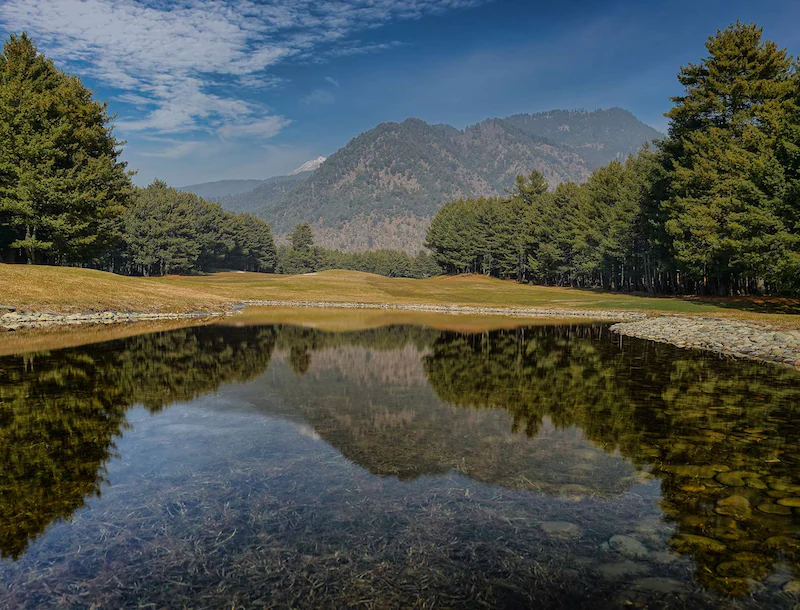
Film tourism can be a significant driver of growth such as creating new demand, benefiting local economies, and putting lesser-known destinations on the map. The challenge lies in managing this responsibly. An unchecked surge in visitors can strain infrastructure, threaten ecological balance, and compromise cultural authenticity. The key is to channel cinematic visibility into sustainable tourism that respects both people and place.
Popular films and shows can drive a surge of growth in enquiries, as seen historically with Switzerland post Dilwale Dulhania Le Jayenge and Kashmir after Jab Tak Hai Jaan. K-dramas like Boys Over Flowers and Guardian: The Lonely and Great God, and K-pop groups like BTS and Blackpink have made South Korea a dream destination where people want to walk the same streets as their favourite characters, try the local food, visit those cute cafés, even wear traditional outfits and take pictures at filming spots.
What’s interesting is how content is now influencing travel choices in a very personal way. People are looking for more than sightseeing; they want to feel the place as they saw it in the show or film. Social media adds to that, too, so everyone wants their own reel-worthy version of the story. For example, Mumbai and Delhi are already prominent destinations amongst Indian travellers, but films like Gully Boy and television shows like Made in Heaven are rekindling interest in new areas of the respective cities and new ways of exploring them. The opportunity is immense, but it must be managed responsibly to avoid over tourism. Done sustainably, film tourism creates a win-win for travellers, destinations, and local communities — transforming on-screen magic into off-screen memories.
Today’s traveller is experience-driven, and many are choosing to step into the story themselves. Governments have realized film is not just culture but commerce. Countries like Italy, Spain, Australia, Eastern Europe, and of course India, have sharpened their film commissions, streamlined permits, and bolstered tax incentives. India is building infrastructure around states like Madhya Pradesh and Kerala to draw international shoots. The smartest regions are blending policy with hospitality: they make it easy, but they also make it inspiring.
The pros are immense: economic uplift, cultural exchange, and global visibility for destinations. Productions offer the location production teams work, other locals may be hired to appear in a hit show or prestige film, and their beloved country or region can be beautifully highlighted reaching viewers from all over the world. It’s the best advertisement for any tourism board. It democratizes luxury travel too, someone who may not have considered going to India suddenly sees themselves there because of a beloved film.
Across India too, the pattern is evident: Ladakh witnessed a boom post 3 Idiots, Manali drew national attention after Yeh Jawaani Hai Deewani, and Rajasthan has continually benefitted from its recurring presence in Bollywood. Internationally, the same phenomenon is seen in destinations like New Zealand, made famous by The Lord of the Rings, and Dubrovnik, which rose to global fame with Game of Thrones.
Travellers today are eager to explore destinations they’ve seen on screen, often retracing film trails as part of their journeys. Locations like Naukuchiatal, with their natural beauty and layered character, hold similar potential to inspire travellers once brought alive through cinema.
Across India, states are actively courting filmmakers through measures such as single-window clearances, streamlined permissions, and logistical assistance. Uttarakhand has been a frontrunner, offering a dedicated film policy that provides subsidies, location support, and facilitation services. Equally important are practical enablers – from connectivity and infrastructure to quality hospitality. These factors are making locations like Nainital and Naukuchiatal increasingly attractive for production houses seeking fresh yet accessible landscapes.
The rise of OTT platforms has amplified global exposure for destinations, with content reaching audiences far beyond geographical boundaries. Viewers often form emotional connections with on-screen locations and want to experience them firsthand. At the same time, today’s travellers seek authenticity and the chance to step into the landscapes and narratives they’ve watched. This intersection of digital reach and experiential travel is fuelling the rapid growth of film-inspired tourism.
Read the full story that first appeared in Travel+Leisure here:
A PDF is below:


Leave a Reply